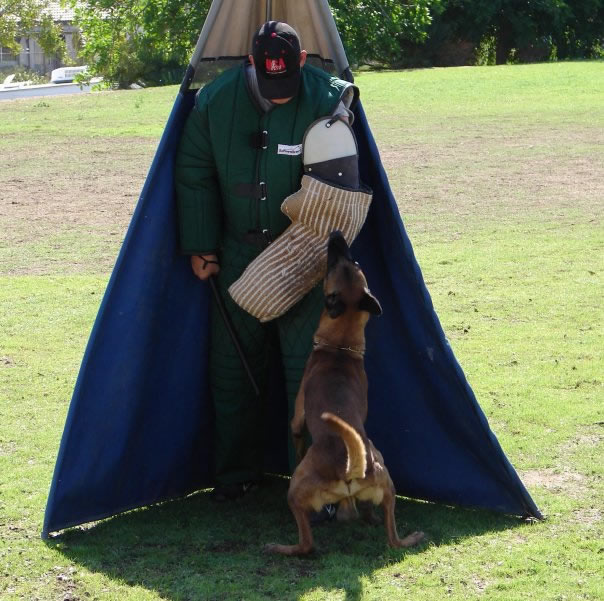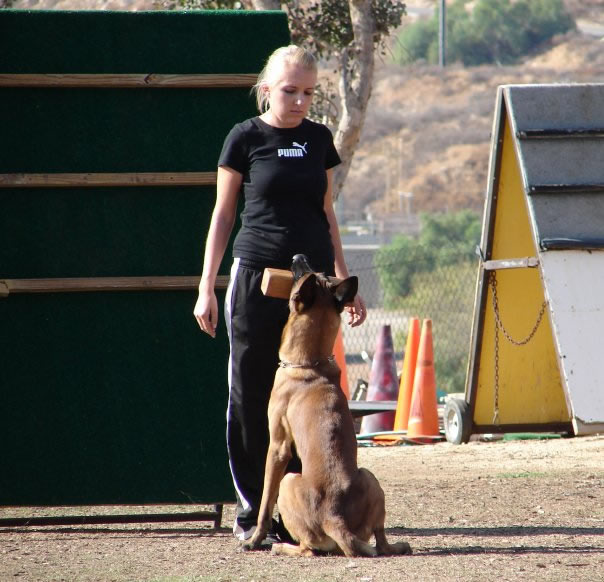|
IGP, is a set of rules that govern a sport called Schutzhund, which originated as a breeding suitability test for the German Shepherd Dog. Originally there were variations in the rules between differing organizations in the US and Europe for this three-phase sport of tracking, obedience, and protection, but recently the rules have been unified and are administered by the Fédération Cynologique Internationale (FCI). The AWMA believes that the through the use of IGP trials, important aspects of the working quality of the dog can be determined. The sport therefore serves as a mechanism for selecting dogs for breeding as well as for service work.
|
This is a very challenging sport that evaluates the dog’s character and trainability. Not all dogs have the temperament to succeed, and even if they do, countless hours of thoughtful training are needed to prepare the dog for competition. But when it all comes together, there is nothing more exciting than watching the power and poetry of a confident, well trained dog performing on the field with its handler.
|
IGP titles are attained sequentially, beginning with IGP 1 and progressing through IGP 2 and IGP 3. To attain each title, the dog and handler must pass all three phases with a minimum of 70 out of 100 pts per phase. Tracking is scored on the ability of the dog to precisely follow the footsteps of the track and to indicate articles placed on it. Depending on the title, the tracks vary in length, shape and age. In obedience, the dog must exhibit joy in the work while demonstrating attentiveness to the handler and successfully completing the exercises. Depending on the title, obedience includes on and off lead heeling, sit, down, and/or stand while moving, recall(s), retrieving, jumping, and a long down.
|
During the heeling and long down, shots are fired from a blank pistol to test the dog’s sound sensitivity. The third phase is protection. The dog must have courage, self-confidence, and be obedient throughout this phase. There is no place for dogs that are out of control or overly aggressive. The dog must search for the helper, bark when he is found, and leave the helper when called. The dog must only bite the protective sleeve worn by the helper and release the bite when given a command. The manner in which the dog interacts with the helper, including the confidence in which the dog bites the sleeve, is part of the judging. Aggressive dogs and those that lack obedience and control will be failed.
In addition to the IGP titles, there are tracking titles, including the FH, FH 2 and IGP FH. FH tracks are 1200 paces (FH1) to 1800 paces (FH2), have cross-tracks laid by an additional tracklayer, are three hours or more old, and also have more articles that the dog must indicate. For the IGP FH, the dog must pass two FH2 tracks on subsequent days. These advanced tracks truly evaluate the heart, determination and training of the dogs.
In addition to the IGP titles, there are tracking titles, including the FH, FH 2 and IGP FH. FH tracks are 1200 paces (FH1) to 1800 paces (FH2), have cross-tracks laid by an additional tracklayer, are three hours or more old, and also have more articles that the dog must indicate. For the IGP FH, the dog must pass two FH2 tracks on subsequent days. These advanced tracks truly evaluate the heart, determination and training of the dogs.
Photos by Michelle Kutelis


